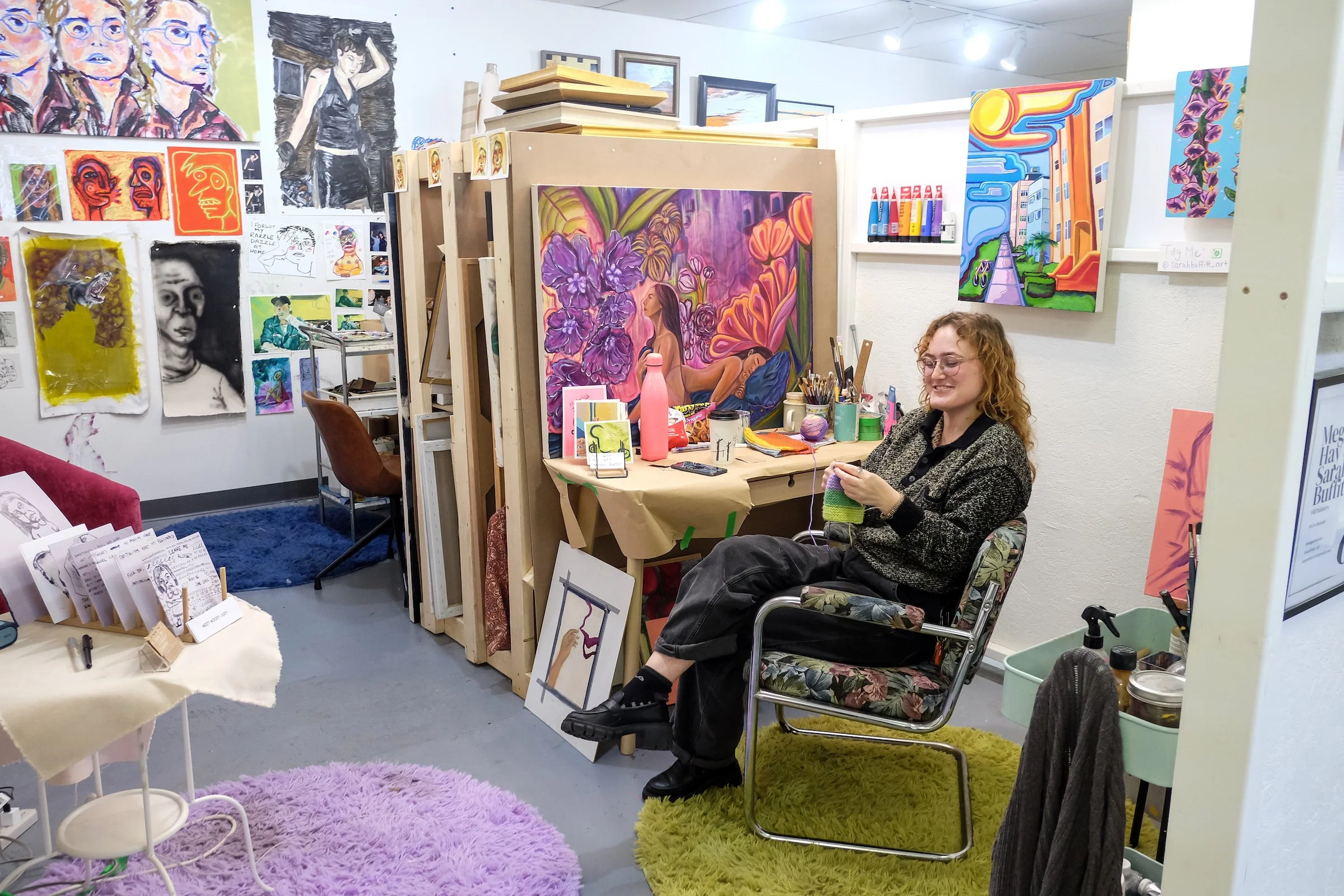Review: The Octopus Eats Its Own Leg by Takashi Murakami
/PHOTO BY MARIA PONCE BERRE
Takashi Murakami is a spectacle. Google images of him and you’ll find photographs of Murakami smiling with both his palms face out, often dressed in a colourful, wacky assemble. In his exhibition The Octopus Eats Its Own Leg at the Vancouver Art Gallery, he attended the media preview in a bejewelled blue suit complete with swirls of purple hues, an octopus hat, and a pair of the coveted Virgil Abloh x Nike Air Jordan 1s.
The Octopus Eats Its Own Leg is an exhibition curated in partnership with the Museum of Contemporary Art (MCA), Chicago, which offers an in-depth retrospective of the development of Murakami’s paintings from the 1980s to the present, featuring fifty-five paintings and sculptures across the second floor of the gallery. The exhibition opens with his early work Picture of a Turtle ‘I Spin’, 1986 and Nuclear Power Picture, 1988, which are darker, muted paintings that reflect the atrocity of the atomic bombings of Hiroshima and Nagasaki during World War II.
PHOTO BY TOM POWELL IMAGING
The exhibition, then, rather abruptly jumps to Murakami’s work from the early 2000s involving his character ‘Mr. Dob’. The most recognizable works Tan Tan Bo Puking - a.k.a. Gero Tan, 2002 and Flower Ball 2, 2002 are examples of the postmodern art movement Superflat. A movement founded by Murakami, he developed the format of the monochrome field using it as a tool to bridge the East and West. The flattened use of form in Murakami’s work evoke the traditional Japanese practise of Nihonga, while the bright colours and familiar characters are culled from manga and anime resulting in an adoption into Western pop culture.
PHOTO BY ADAM REICH
Superflat is a form where “distinction between high and low, new and old, original and derivative are flattened into a superficial gloss that covers contemporary society” James W. Alsdorf Chief Curator of MCA, Chicago, Michael Darling explains. Thus, The Octopus Eats Its Own Leg is not just a narrative of Murakami’s artistic practise, but traces the boundary of art and mass-produced consumer products.
Collaborations with Louis Vuitton, Kanye West, Vogue and Comme des Garcons have been instrumental in propelling him into a cultural icon. With this high demand to produce, his art production company Kaikai Kiki Co. are responsible for executing much of his artistic vision and leaving one to question the definition of art—is it intellectual property, or the physical artistic act? One could look at Murakami as an artistic genius, much like Old Master artists whose paintings were produced by their pupils. Or you could view Murakami as a business owner, creating plush toys, keychains, and other miscellaneous items capitalizing on the consumer culture of his followers.
© 2010 Takashi Murakami/Kaikai Kiki Co., Ltd. All Rights Reserved.
The commercialization of Murakami’s practise has no doubt contributed to his success as an artist, which was evident during the media preview at the Vancouver Art Gallery. Individuals flocked to follow Murakami as he stopped to pose in front of the title wall of the exhibition, ignoring the other artworks in sight. In The Octopus Eats Its Own Leg, the viewer’s experience is defined by the cultural sensation surrounding Murakami, and the artwork becomes secondary to the spectacle.









